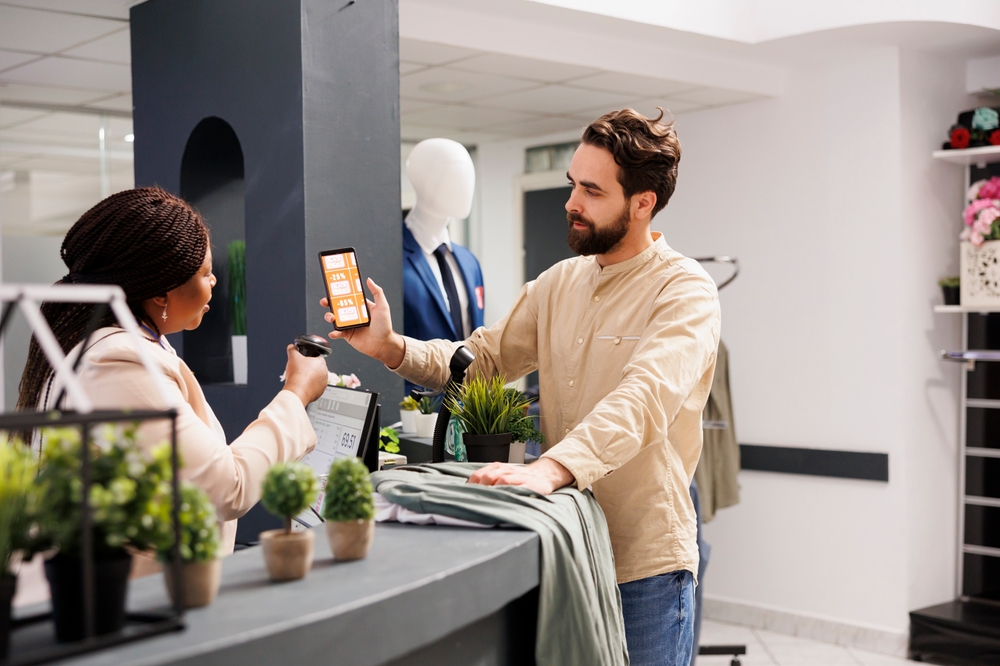When it comes to loyalty apps, user expectations are at an all-time high. Research finds 79% of shoppers prefer to buy from brands and retailers with a loyalty program and 74% think they're an excellent way to reward customers. In this article we’ll explore four key things brands must get right within their loyalty app to ensure they create a successful and satisfying customer experience.
Loyalty apps are evolving beyond traditional points-based systems where customers accumulate points over long periods before seeing any real benefits. Today, the expectation is shifting towards offering instant value where customers benefit immediately with every purchase. With this in mind, brands must step up their game to deliver real value through their digital loyalty scheme apps to keep customers engaged and remain competitive enough to cultivate strong customer relationships.
1. Offer instant value for customers
As we already stated, one of the most important features of any loyalty app is the ability to deliver instant gratification to customers. A clear, simple process for redeeming rewards is critical. Customers need to know exactly how their loyalty translates into tangible benefits and they should be able to claim these rewards seamlessly.
The most effective loyalty apps make it effortless for users to understand the rewards system. Whether it's free items, discounts or exclusive offers, the pathway to redemption should be intuitive and clearly displayed within the app.
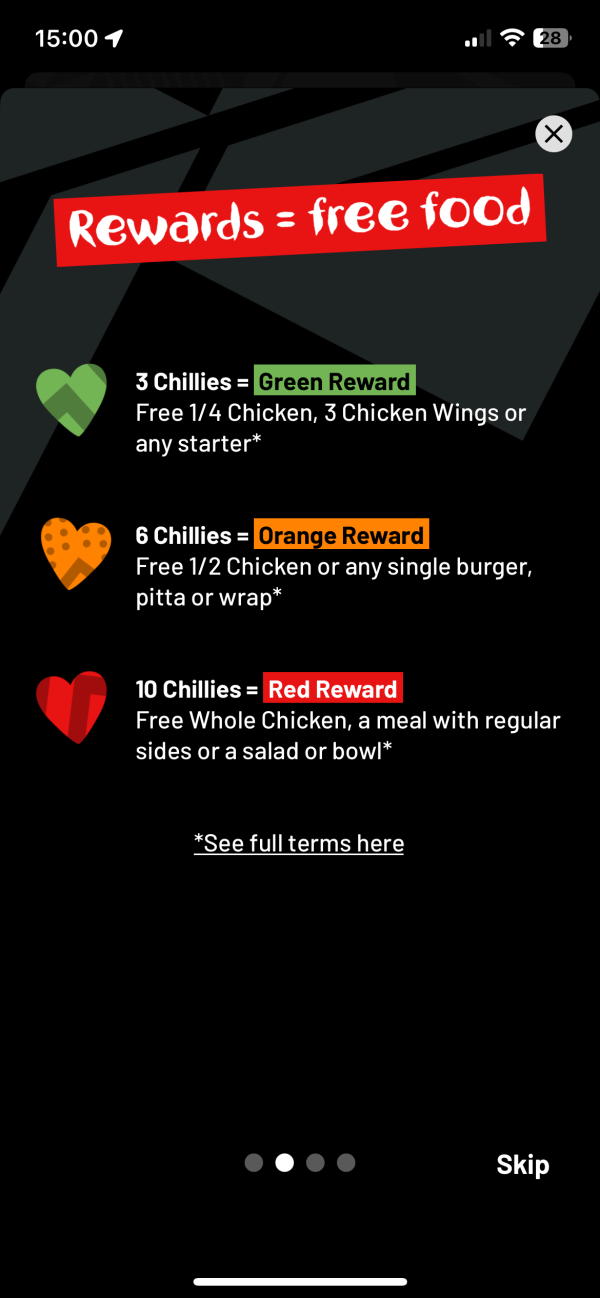 |
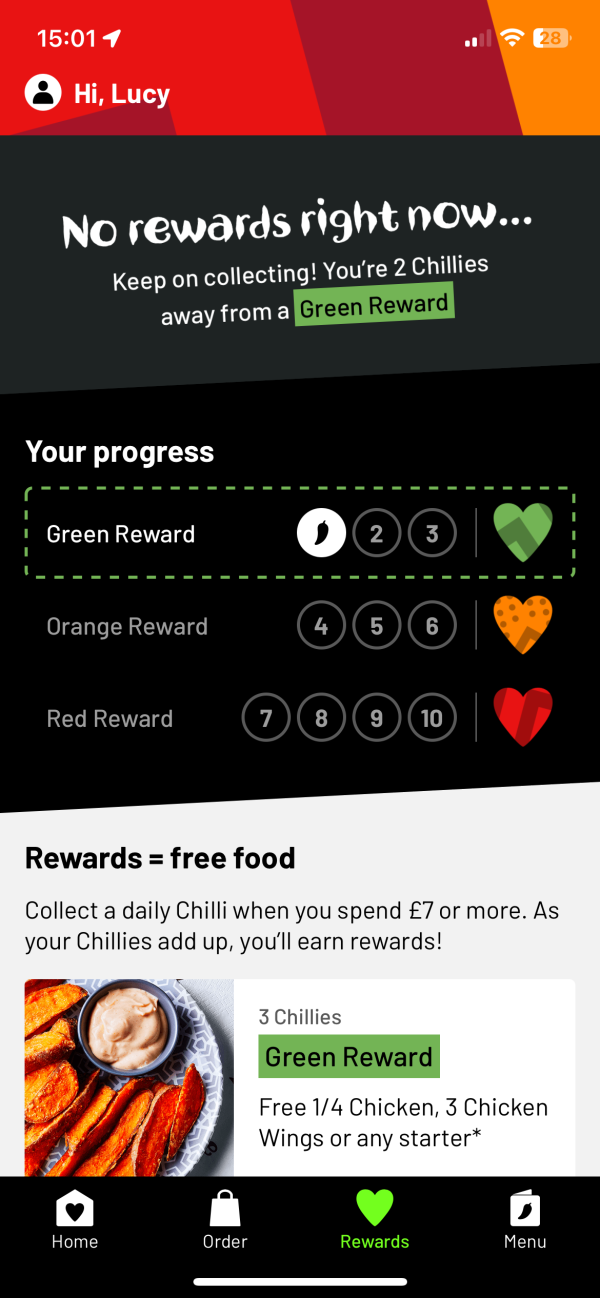 |
 |
Nando’s and Pizza Express app examples clearly illustrates how points can be earned and redeemed, emphasising the immediate rewards customers can claim with each transaction. This model keeps customers engaged and incentivises them to use the app regularly.
2. Tailor the experience
Personalisation is key to making a loyalty app feel relevant and valuable to individual customers. A good loyalty app collects data on customer preferences and purchase habits. It then uses that data to offer tailored rewards, recommendations and content. By doing so, the app creates a meaningful and unique experience that deepens the connection between the brand and the user.
When rewards align with customers' buying habits and preferences, the likelihood of them continuing to use the app increases. Tailoring the experience also gives customers the feeling that the brand genuinely understands and values their personal tastes, enhancing both customer satisfaction and long-term loyalty.
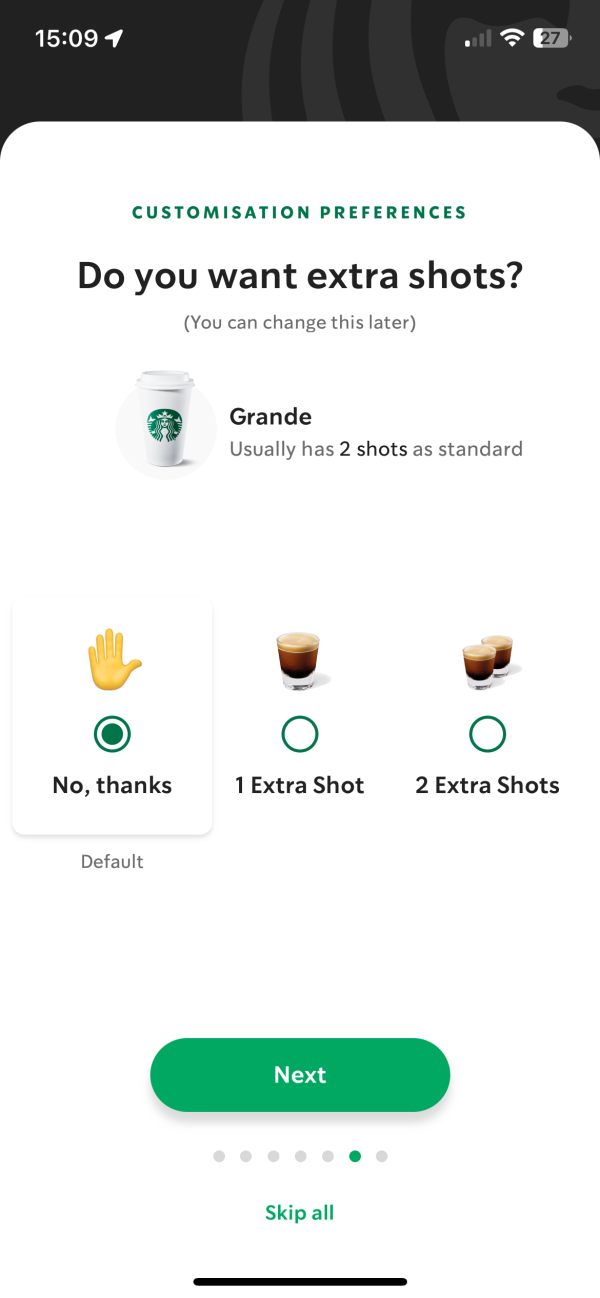 |
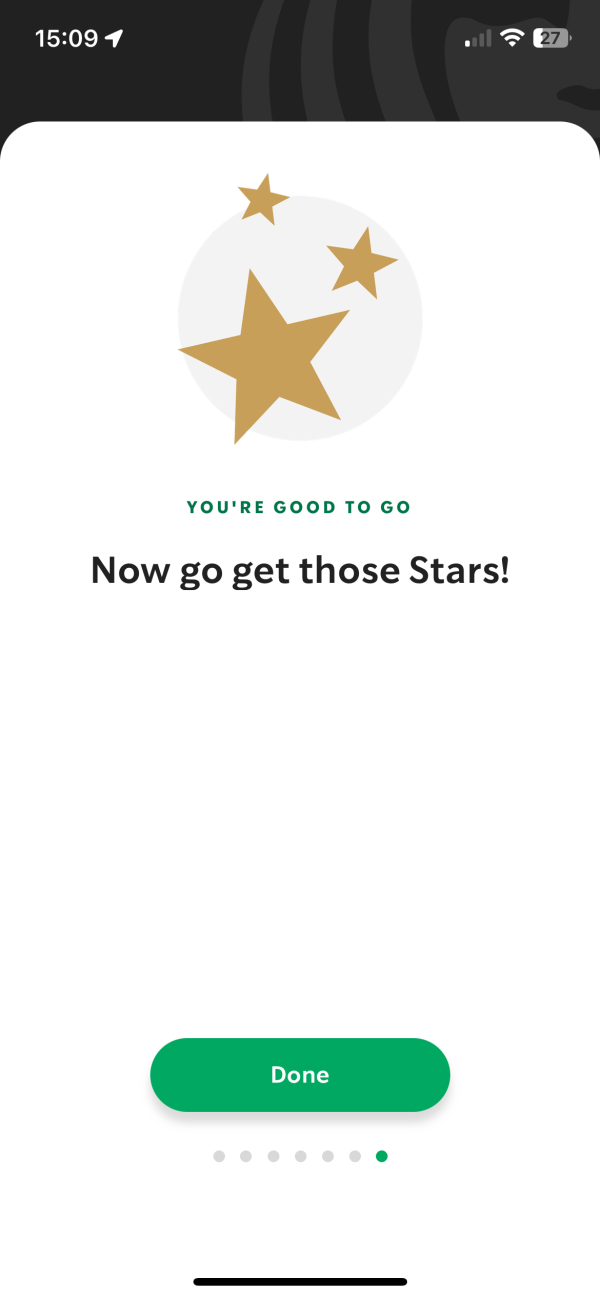 |
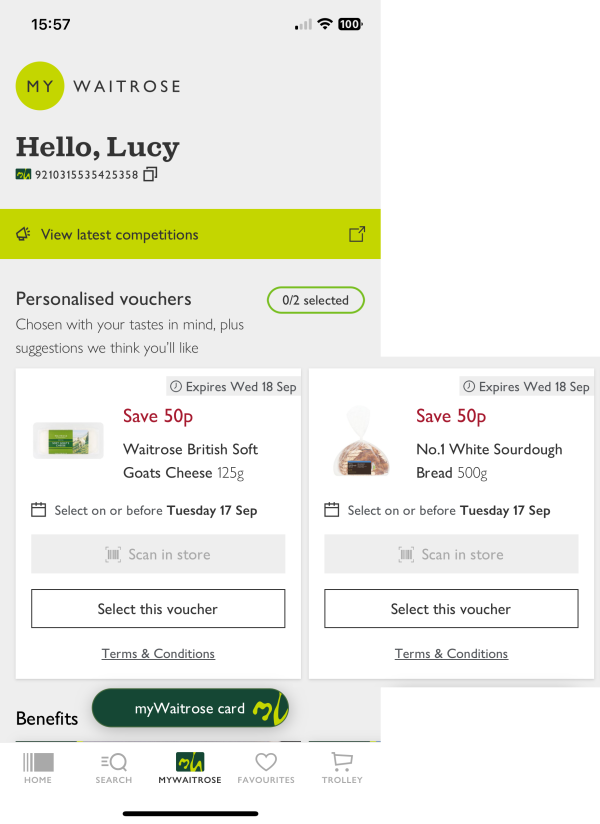 |
Starbucks’ loyalty app records a customer’s coffee preferences and offers personalised drink recommendations. These not only adds value but creates an emotional connection by showing that the brand pays attention to individual preferences. Waitrose offers personalised discounts for the user based on their existing buying habits, making rewards highly relevant to their individual customer.
3. Create a delightful experience that keeps things fresh
The overall experience of using a loyalty app should be enjoyable and engaging. To achieve this, brands need to incorporate elements of surprise and delight, keeping users excited and intrigued about what might come next.
The “wow” factor in loyalty apps is important for customer retention. Users who enjoy the app experience are far more likely to continue using it over time. One way to achieve this is by delivering unexpected rewards or perks at key moments in the customer journey. For example, a brand could surprise users with a free product on their birthday or reward them simply for completing the onboarding process.
Surprising users when they least expect it can elevate the user experience and foster a stronger sense of brand loyalty. By continually introducing fresh content, rewards or features, the app remains exciting and dynamic, encouraging repeat engagement.
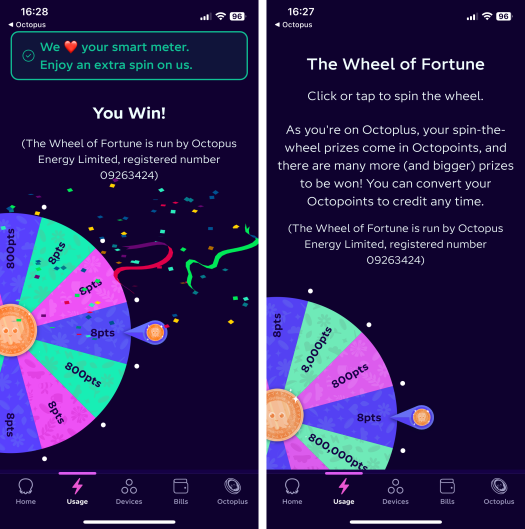
Octopus Energy creates a surprise-and-delight moment when users check their energy usage within the app by offering a playful "spin the wheel" feature. At random times, users can spin the wheel to receive discounts on their energy consumption. This unexpected interaction adds an element of fun and excitement, offering customers a surprise that enhances their experience with the brand.
4. The in-store experience should align seamlessly with the app
A successful loyalty app should bridge the gap between digital and physical experiences. Offering exclusive, in-store-only rewards encourages foot traffic and strengthens the connection between the app and store experience.
Waitrose provides an excellent example of how to create this seamless integration. Their loyalty app offers in-store perks, such as a free coffee with every purchase or exclusive discounts on specific days such as 20% off fish every Friday. These perks not only enhance the shopping experience but also serve as an incentive for customers to return to the store regularly.
To truly complement the in-store experience, the process of claiming perks or rewards from the app through to redemption in-store should be frictionless for customers.
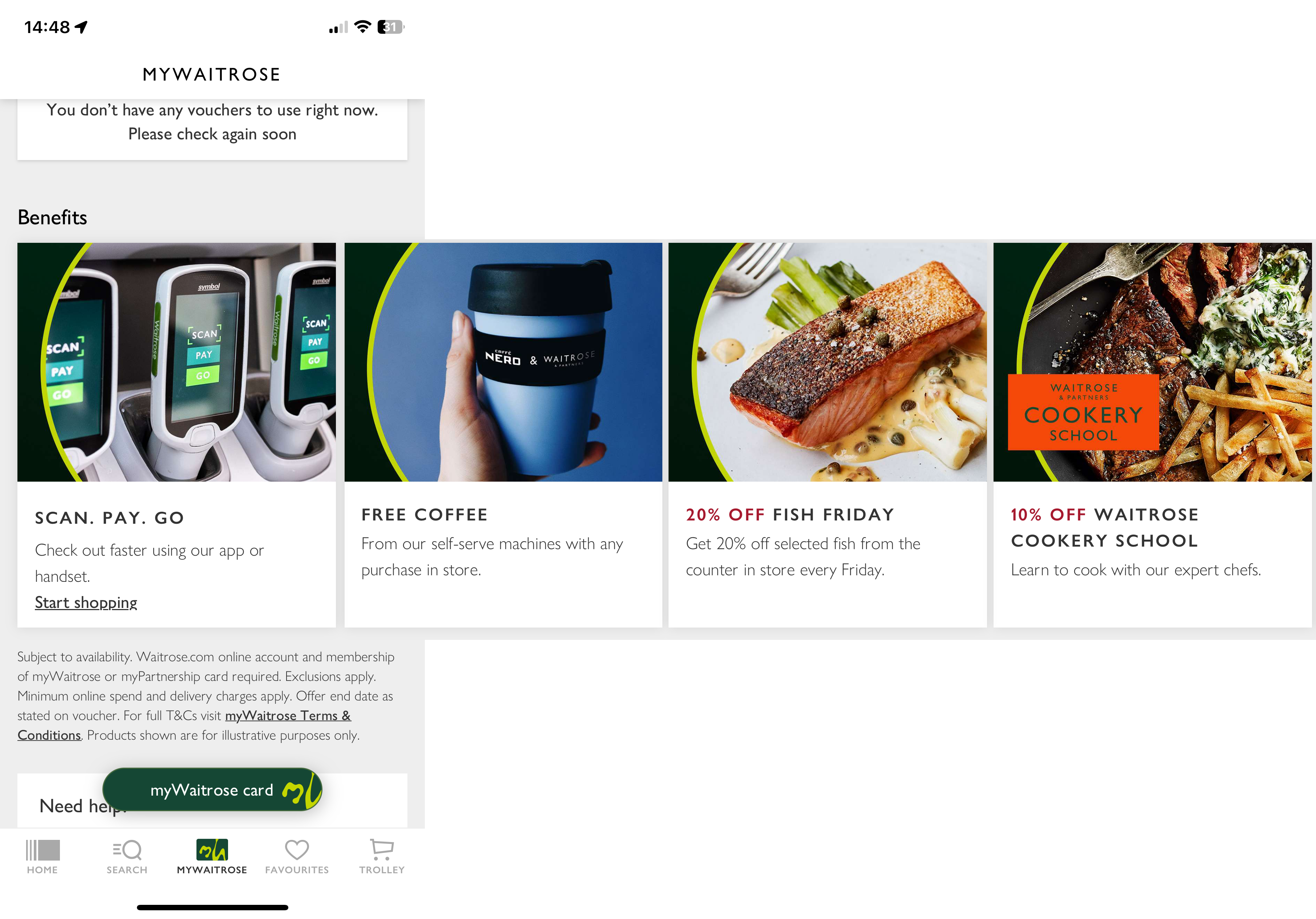
Furthermore, the loyalty app can offer functionality that makes the in-store experience more enjoyable and convenient for customers. Functions like the ability to scan and pay for products directly within the app help customers avoid lengthy queues in-store, streamlining the entire shopping experience. Similarly,
Pizza Express have recently created functionality within their loyalty app that allows customers to pay their bill directly within the app, without needing to get the attention of busy waitstaff. The loyalty app can solve genuine customer pain points and make the physical store experience a more pleasant one.
Your loyalty app can deliver more
In today’s fast-paced retail landscape, loyalty apps must deliver more than just a points system or price matching. They need to offer instant value, provide personalised experiences, delight customers with unexpected rewards and seamlessly connect the digital and physical shopping environments.
The most successful loyalty apps are those that create an emotional connection between the brand and the customer, making users feel appreciated and valued with every interaction. Whether it’s a small timely surprise or a personalised recommendation based on past purchases, these thoughtful moments can transform an otherwise standard loyalty app into a joyful and user centric experience.
Brands who get these four key elements right will not only increase customer engagement but also foster long-term loyalty, ensuring that customers continue to choose them over competitors. Take Lidl for example, who’s loyalty app taps into the four elements covered in this article. They saw a 12% sales growth, 4% higher than their direct competitor Aldi.
How CACI Digital Experience can help?
We are experts in both web and mobile App Development so can help make your loyalty app even better. Take a look at what we offer or contact us now and we’ll see how we can help.
